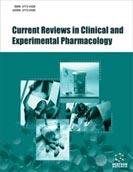Abstract
The present investigation aims at development of spray-dried microspheres for formulation of roxithromycin dispersible tablets. The spray drying process was optimized using a central composite design to study the effect of two critical variables - amount of polymer Eudargit EPO® (X1) and inlet temperature (X2) on entrapment efficiency of drug and percentage cumulative drug release (% CDR). The maximum entrapment efficiency and % CDR was found at high values of inlet temperature and high level of polymer concentration. A drug entrapment efficiency of about 58.48 % (w/w), loading capacity of 64.22% (w/w), 94.26% CDR and particle size of 615 nm were achieved for the optimized batch RMS-3 of roxithromycin microspheres. ANOVA was applied to entrapment effeciency and % CDR to study the fitting and the significance of the model. The model estimated using present study has utility as response surface for cumulative percent of drug release from microspheres. The spray dried optimized microspheres were further formulated into dispersible tablets using direct compression method. The prepared tablets were evaluated for different parameters and the results obtained were found to be within the pharmacopoeial limits. The developed dispersible tablets showed better taste profile when compared with the marketed formulation and were found to be stable.
Keywords: Central composite design, Eudragit® EPO, roxithromycin, spray drying, taste masking, microspheres, dispersible tablets.
Graphical Abstract
 11
11 2
2



